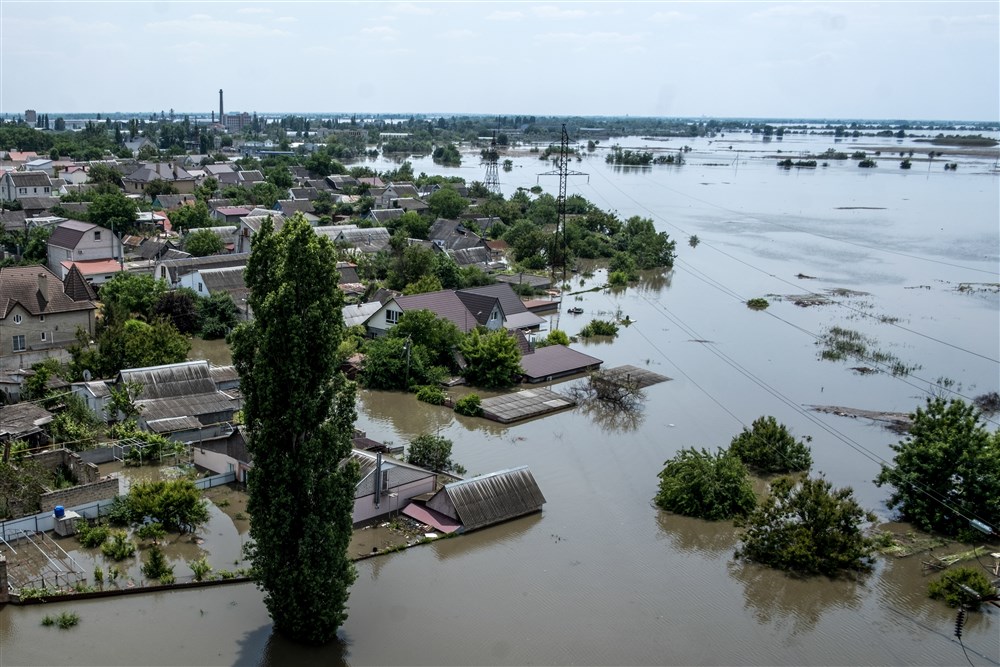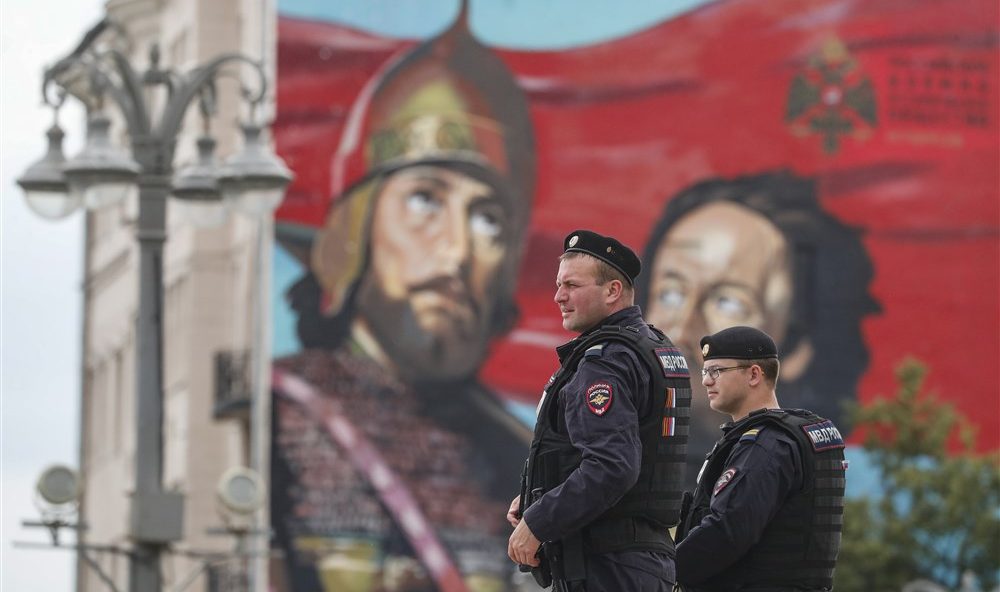As more milestones come and go – the NATO summit, the 500th day of war – it is worth reflecting on the remarkable expansion and growing strength of the largest and most successful military alliance in history.
The excellent news from Vilnius of Sweden’s imminent accession will take NATO’s membership to 32 countries with a combined estimated annual military spending of over $1.27tn in 2023 (including Stockholm’s $8.7bn budget). Even without the US, Nato’s European members plus Canada spend over $412bn together per year. In contrast, Russia went into the war with a real budget of around $63bn, which is expected to reach up to $90bn in 2023 – less than a fourth of what Europe alone spends.
And most NATO countries, especially in Europe, have only just launched their new rearmament programmes in response to Russia’s invasion; these will bear heavy fruit in the coming years. France, for example, is legislating for significant hikes in military spending, over €3bn annually, on top of spending on aid to Ukraine. By 2030 the French budget should hit €60bn (it was about half only six years ago). This is taking France’s defence equipment investment plan to €413bn for the 2024-2030 period, a 40 per cent increase compared to the previous cycle 2019-2025.
Germany too has pledged €100bn in addition to its pre-planned defence procurement, although doubts remain over the pace and substance of Berlin’s rearmament. Even so, according to NATO’s figures, Germany is already set to overtake Britain as Europe’s largest military spender this year ($68bn vs UK’s $65bn).
In the spring Britain also increased its projected defence spending by $14bn over the next five years, on top of its substantial aid for Ukraine; more announcements are expected when the new UK defence review paper is published later this month.
Romania too is now set to purchase new top-end kit like F-35 jets, Abrams tanks or K9 artillery systems. But of course it is Poland which, more than any other European country, is doubling- and tripling-down on its defence investments, with vast acquisitions and a budget set to reach 4 per cent of GDP.
All of this defence build-up across NATO is happening while also arming Ukraine which, in turn, is chipping away at Russia’s own military power. Moscow is ramping up its defence production and expanding its armed forces, but this is done merely to try to hold off and – Putin hopes – overmatch Ukraine’s field forces. Taking on NATO today, let alone in a few years, appears to be completely beyond Russia’s capacity by any reasonable measure and expected feats of mobilisation.
And to questions of material capacity and financial/industrial resources we can add the worsening military-strategic picture for Russia, especially in the northern theatre where the entirety of Scandinavia is now a NATO bastion, the Baltic is a NATO lake, and St Petersburg is now within NATO battlefield missile range from two sides since Finland joined the Alliance. In addition, NATO is switching from a deterrence to a defence posture across the whole of the eastern flank, moving from having “tripwire” US and West European forces in the Baltics and Romania to battle-ready formations that can withstand an initial attack on their own – including a brigade’s worth of the US 101st Airborne deployed by the Black Sea at the mouth of the Danube.
Two important points arise from this indisputable picture of Nato’s ever-growing strength. The first is that there is more than enough capacity across the alliance to spare and send to Ukraine right now.
The case has been made in certain British quarters, for example, for simply transferring the bulk of the British Army’s heavy and medium equipment to Ukraine, since they’re actively engaged in reducing the main threat for which that equipment exists in the first place.
This may be a somewhat outlandish position, but the principle is valid and can be applied across NATO: there is much more that can be safely transferred to Ukraine now, than politicians would admit. Furthermore, anything that is taken out of European stocks today can be rebuilt tomorrow, way before Russia can ever recover enough to even attempt an invasion of NATO territory (a mad proposition even before the Ukraine war, but curiously taken seriously by a great many analysts nonetheless).
The second consequence of NATO strength, that is very important to acknowledge and discuss, is that, however harsh it sounds, the outcome of the war in Ukraine is relatively marginal to NATO’s ability to defend itself. This is really the crux of the political dynamics around how far should support for Ukraine go in a worst case scenario.
There is a certain current of opinion which holds that somehow Europe’s security, and therefore NATO’s future, are now bound up with Ukraine’s. A combination of rhetoric, material and political investment, and certain irrevocable measures already taken against Russia – asset seizures, arrest warrants, cultural purges, quite apart from the open arming of Kyiv – have seemingly raised the stakes of this conflict to the highest degree.
With the West thus committed, and the issue thus framed, no decisions would be off the table in the key capitals of Europe and the US should Ukraine’s war effort seriously falter. The prospect of a “coalition of the willing” centred on Poland placing troops in Western Ukraine has already been floated by the former Nato Secretary General, Anders Fogh Rasmussen; and calls for immediate NATO membership for the valiant Ukrainians have only grown louder in recent weeks. Either proposal – and other variations, from no-fly-zones to “purely defensive” NATO anti-air systems deployed in Ukraine – mean a general war with Russia, period.
We should never fear fighting Russia if we must, and indeed every Allied country should always be ready for this ultimate conflagration. But if NATO is to ever be dragged down this path, there should be a very good – an absolutely vital – reason for it.
In cold, political terms it has been clear from the outset that the support given to Kyiv was first and foremost a statement of Western resolve to not let this illegal Russian aggression stand, and certainly to not reward it with territorial concessions forced on Ukraine without a heavy fight.
Allow Putin to openly invade its neighbour, unprovoked and unopposed, and world order would be instantly reset to 1939: the sacrifices of a world war, the struggles of a cold war, and the efforts to build an entire international system would have been for naught if we simply returned to Hitler and Stalin’s world where might was right. It was therefore absolutely essential for NATO countries to respond forcefully, if not directly militarily, to this challenge.

Beyond this, backing Ukraine to the hilt was also a practical and self-interested solution in military terms. As US Defence Secretary Austin himself suggested early on in the war – when Kyiv had been saved – Ukrainian resistance was promising to eviscerate Russia’s fighting power for a generation – or even ensure it would never be a threat again. This looked like an opportunity to neutralise a longstanding geostrategic rival at a discount, with the Ukrainians doing the fighting.
More broadly, there was – and still is – the important strategic incentive of not allowing Russian forces to occupy Odessa and link with Transnistria – which would have created a major vulnerability for NATO in the Black Sea region over the long term.
Both of these pragmatic reasons, although more important in real terms, have been overshadowed, in the public conversation, by the moral and emotional case for supporting Ukraine. The plight of this brave nation and the justice of its cause have struck the conscience of the entire Western world and beyond. Any victim of aggression is deserving of help from civilised nations, but the fact that this was a European country brought this tragedy home and made it more visceral and immediate particularly for Europeans. This explains the enduring majority public support across the continent for continued aid to Ukraine. It is understandable that this should be so, and it is right.
And yet, none of this should cloud judgement when it comes to extremely high-risk decisions that may be required going forward should the tide of war turn in the wrong direction. This remains an unlikely prospect but the possibility cannot be ignored. The hard fact is that the outcome in Ukraine, while very important strategically and politically to the West, is not vital to the future of NATO.
The Alliance’s primary mission, by treaty, is to defend the territory of its members but the two factors in this equation, the threat (from Russia) and NATO’s capacity, have changed significantly The first is decreasing and the second is increasing, by a large margin, irrespective of the course of the war.
Doubtless, anything less than a “defeat” for Putin’s Russia would be not just a moral tragedy but a severe blow to Western prestige and influence in world affairs. But such was Vietnam, too; and Afghanistan, ultimately with marginal consequences for the US or the free world. This is because in geopolitics the buck stops with hard military power.
On that count, NATO’s future is bright as long as its members stay united. They have plenty of military capabilities to spare for Ukraine’s war effort, and they should transfer more of them to Kyiv and thus prevent any possibility of a hard or foolish choice down the line between helping Ukraine and war with Russia.
Gabriel Elefteriu is deputy director at the Council on Geostrategy in London and a fellow at the Yorktown Institute in Washington, D.C.






New Europe had the potential to save the European project from its federalist excesses – but is this another victim of the Ukraine war?